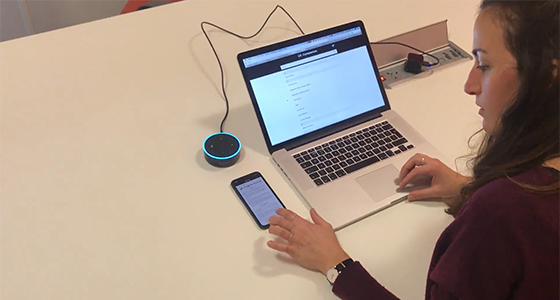As new technologies and behaviours evolve, how we search for information becomes more sophisticated, intuitive and ingrained within our daily lives. Now, we can call out to Alexa when we want to know something; search on-the-go on mobile; and check notifications from our wearables.
It’s a fast-paced, exciting time to work in SEO. This article explores the top seven:
- Topic clusters
- Predictive search
- Brand search
- Vertical search
- Mobile-first search
- Voice search
- Visual search
Here's your visual summary of the opportunities and tasklist for you to take advantage of each type of search.
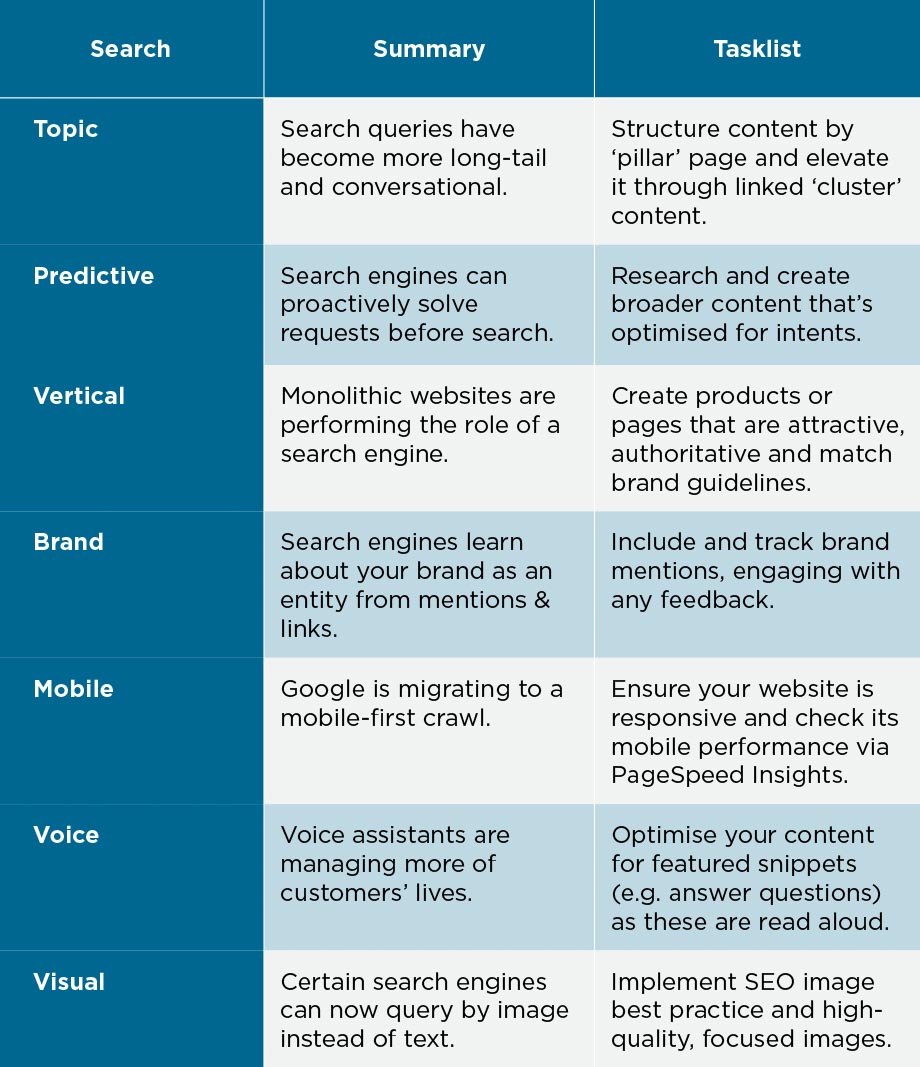
What are topic clusters?
Topic clusters is a SEO technique that progressively raises the ranking and authority of a chief long-form 'pillar' page via creating 'cluster' content that hyperlinks to it.
This has come about because search engines’ capabilities have grown – and so have users’ expectations. Once, we could search for fragmented clauses such as ‘restaurants London’; search optimisation techniques focused on ‘keywords’ accordingly.
Now, we can pose complex, conversational questions such as ‘what’s the best restaurant near me’. 64% of searches are now four words or more. Algorithms can now understand how a query relates to an intent, topic, context and previous similar searches, then deliver a page that best answers it. This hails from a combination of Google’s Hummingbird (2013) and RankBrain (2015) updates.
So, search engine optimisation techniques have evolved too. Enter the ‘topic cluster’ approach. First, conduct user, competitor, industry and keyword research to understand the topics you want to rank for. Then, create a single ‘pillar’ page as the hub for that topic.
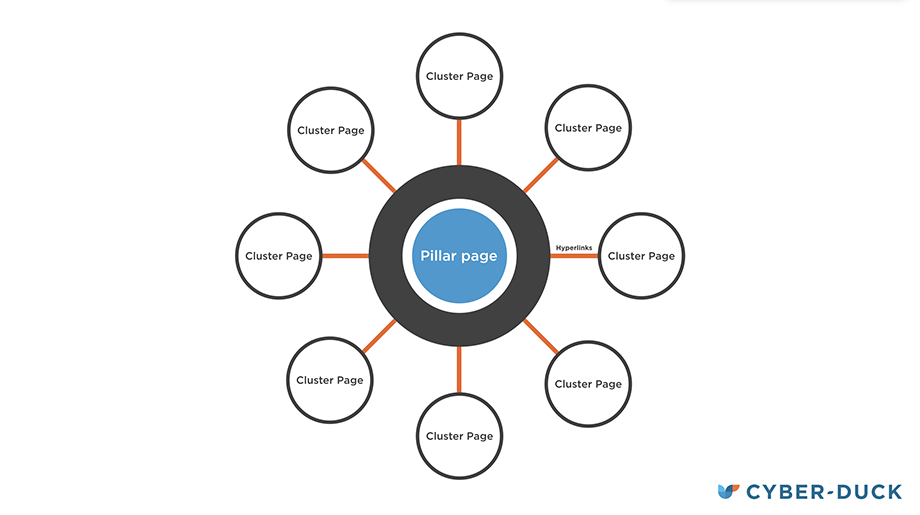
Drill further down into that topic to create niche ‘cluster’ pages. Ensure each cluster page links back to the pillar page and to each other, in a natural way that uses the same anchor text. This interlinking becomes a signal for the authority of the pillar page and, over time, should increase its rank. Hubspot’s research indicates the results of this technique.
What is predictive search?
Through machine learning and artificial intelligence (AI), predictive search covers how algorithms can increasingly predict intentions from previous behaviour, context and browsing activity.
Determining user intent is a fascinating task – and the value of queries / keywords alone to uncover and optimise for this intent is in decline.
This means search engines will become increasingly proactive about solving our needs before they are expressed as a search query. An easy example of this is the possibilities presented to users by autocomplete; many users no longer bother to write ‘near me’ in searches, presuming Google uses their location data.
For PPC and SEO, this shifts our focus from keywords to intent optimisation. Using in market audiences, we can already take advantage of this learning capacity – targeting adverts by geography and industry, for example.
So, brands need to create broader, more nuanced content that will help them ‘own’ topics and themes rather than isolated keywords. That’s why this trend works so nicely with the topic cluster methodology from the previous section.
Micro-moments marketing can help you identify moments where your brand can engage and support users via content, before they reflexively turn to search. Explore our introduction to micro-moments and download our template.
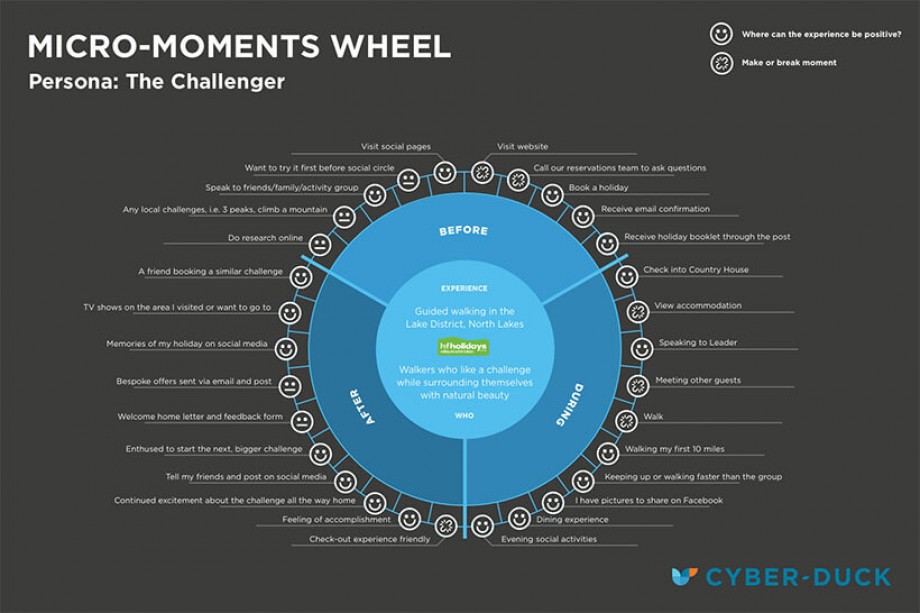
An example of a micro-moments wheel we created for HF Holidays.
What is brand search?
As Search Engine Land outlines, brand search indicates how brands themselves have become a ranking signal.
Search engines ‘learn’ of brands as an entity (i.e. there’s a company with a term) through mentions of the name even without a link; they even determine the authority of your brand from the authority of the domains that mention you.
Build authority for your brand through standard SEO techniques. Mention your brand name on different domains when possible (even without being granted a link). Track mentions and engage with positive / negative feedback. Review your competitors’ and influencers’ strategies for opportunities.
What is vertical search?
Some brands dominate a category so much that SEO techniques have been developed for it. Vertical search is the indexing of content focused within a specific website, content or industry.
Aside from your own website’s search functionality, this would include social platforms (e.g. Pinterest), ecommerce (e.g. Amazon) or sectors (e.g. Skyscanner for travel).
Brands need to develop a cross-platform strategy. Identify if you can build and manage original content for your brand on these websites. Then, build profiles or pages that are authoritative, attractive and are tailored to meet the brand/organisation guidelines.
For example, Wikipedia doesn’t allow each and every company to have their own page. Its ‘notability guidelines’ demands pages are only given for companies with significant coverage in independent sources. Even if that criteria is met, all copywriting has to be stringently neutral and factual, with no ‘marketing language’.
What is mobile-first search?
Now, we’ll turn towards technologies. We all know that search on mobile has trumped desktop for years. Now, mobile-first search means that crawl will focus on how websites are presented for mobile.
This is because Google realised it didn’t make sense that its algorithms crawled desktop websites to determine their relevance for the audience majority on mobile. After a year and a half of experimentation, the migration to mobile-first began in March 2018. Search console sent notifications to websites in question.
This shouldn’t present a significant issue to many brands. Responsive web design – the methodology behind user-centred websites’ composition and code that allow websites to adapt to screen sizes – was trending a few years ago now.
Check how your website can be crawled on mobile via Google’s mobile-friendly testing tool. Any errors that it flags need to be fixed as Google has rolled out the algorithm update.
Google’s own PageSpeed Insights also indicates your website’s performance from a user experience and technology standpoint. The clue’s in the name – page speed is the most critical here as its influence over rank is growing. It’s calculated from Chrome’s User Experience report, a database of performance for real users.
What is voice search?
Voice search optimisation is no longer a futuristic ‘nice to have’ but a current demand and opportunity for engagement. It's when a user performs a search for information or action via a voice assistant e.g. Amazon Alexa or Google Asistant.
Microsoft predicts that 75% of households will have at least one smart speaker by 2020. Its research reveals how ‘search is moving from a place of answers to a state of action’. Digital assistants help us manage our lives. Convenience and brands’ mitigation efforts drive this growth, despite the headline-stealing concerns of passive listening and data security.
Interestingly, voice search collides with another SEO trendy topic: featured snippets.
“Optimising for voice search is optimising for featured snippets.”
Christi Olson, Head of Evangelism at Microsoft
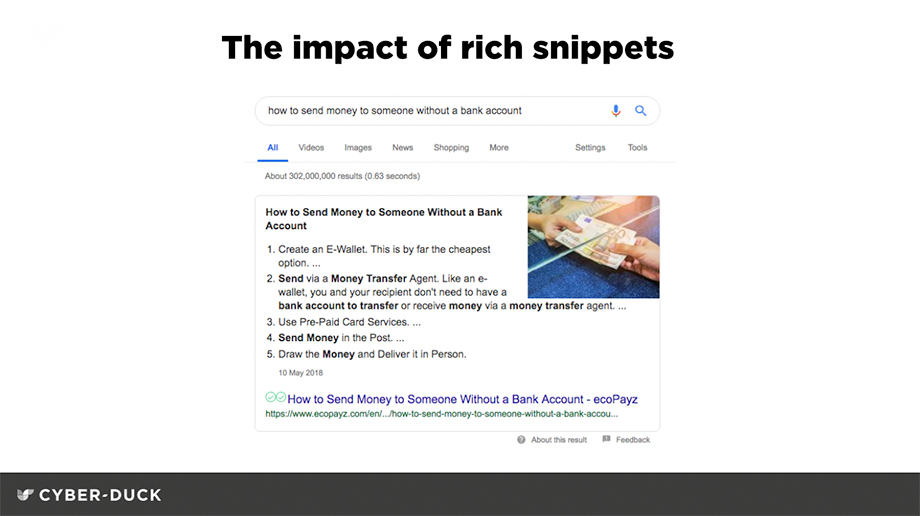
Rich snippets can be in a paragraph, list or table format. They increase your organic exposure, brand awareness and are typically used by Google to answer voice search queries. We tested this strategy for our client ecoPayz, a global payment solutions provider. Our optimisation secured one blog post a featured snippet; you can see the difference this made on their traffic below.
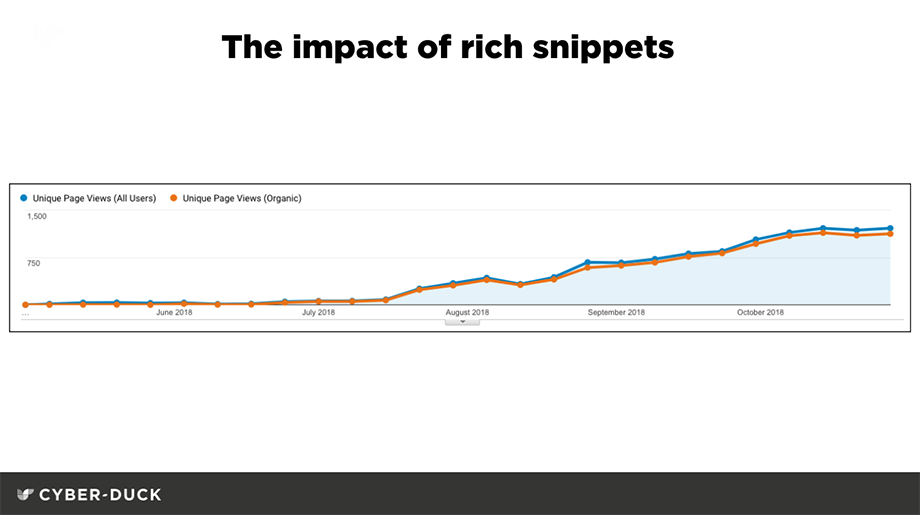
At the popular MozCon 2019, Christi Olson outlined the best process to follow to secure a featured snippet. Explore her slides here. Beneficially, optimising for mobile-first indexing also plays a role.
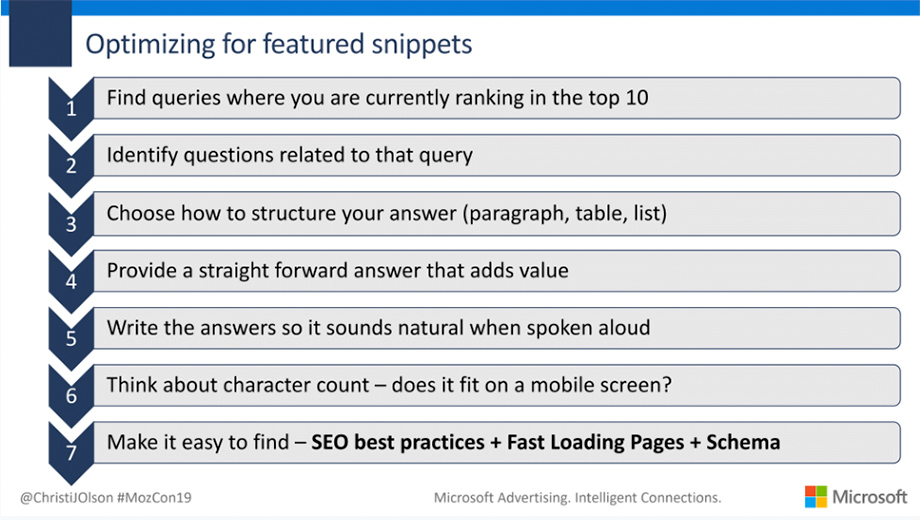
If you’re interested in creating your very own Amazon Alexa skill or even a chatbot for your website, head over to read our Conversational UI Guide for more. Our blog covers why you should develop a conversational user interface.
What is visual search?
Lastly, we’ll try and get ahead of the curve with visual search. Just like it sounds, this is search with image as input through a phone’s camera, instead of text.
It’s been driven by user demand; 62% of millennials would love it, with a further 58% wishing to click-to-purchase from an image directly.
“Shopping has always been visual – we’ve just been taught to do the opposite online.”
Amy Vener, Pinterest
Google Lens and Pinterest Lens are starting to bring this pipedream into reality; they are able to understand images’ composition and search for similarities with others through growing machine learning and image recognition capabilities.
To optimise your brand, follow standard image SEO best practice (e.g. meta data, schema, alt tags…) and upload XML sitemaps. Taking ecommerce for example, reduce background noise and focus on the item in question. Understanding the context of your images is also vital – so micro-moments can again assist here. Joelle Irvine’s presentation from MozCon 2019 outlines more.
Summary
Search engines are the heart of the Internet – it’s how we learn new information, engage with each other and take action. New ways of interacting with search engines have developed from changes in user behaviour and the growth of new technology capabilities and platforms.
SEO will continue to evolve to meet these transformations – and it’s important to stay ahead of the curve. Please get in touch if you would love us to help with your strategic marketing requirements.
